I’m the most untraditional woodworker who came to traditional woodworking.
I just can’t stand wooden mallets.
To get any sort of clump from them they have to be massive; these huge cumbersome things.
And on top of that, they absorb everything. It doesn’t matter how hard you hit it, nowt happens.
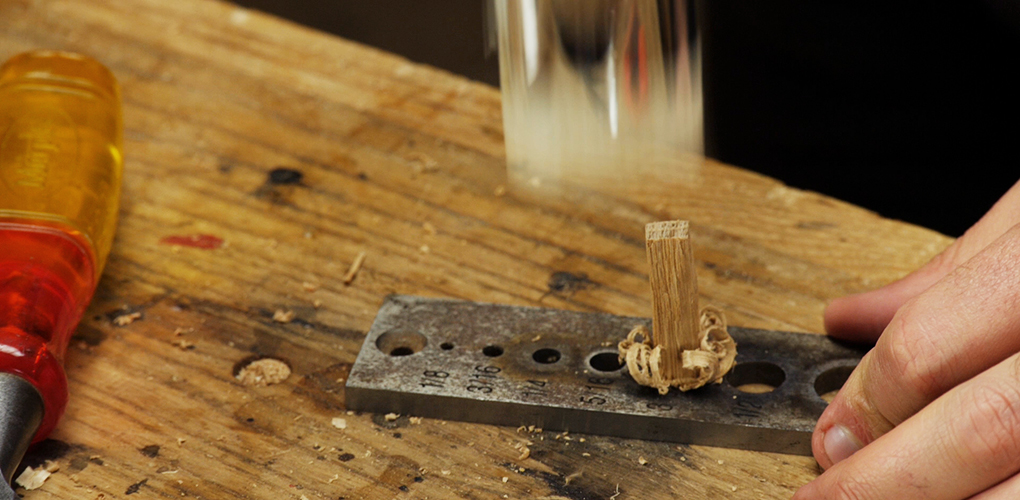
You might remember that I used to use my lump hammer for woodworking. That was brilliant and really swiped through.
Then I moved to my Thor.
I got fed up with the grief ‘Lumpy’ was causing, but he does remain my favourite.
The Thor hammer was added to my kit because a lot of people were asking my thoughts on it. I bought one to try out, and liked it very much right away. Without question it is the best mallet I’ve used that I could recommend for you to buy.
But the Thor Mallet is not entirely unique.
I want to make this point because I’m asked so often ‘which Thor should I buy?’
I always say ‘the biggest’, which is certainly true.
But when I looked around recently to find a more accurate weight for my Thor, I realised they weren’t as widely available as I’d expected.
The Thor is an excellent tool and if you can get one then go for it.
But a big part of it’s appeal is the low cost, which may not apply if buying it is inconvenient, or if delivery to you is expensive.
I want to go through what makes the Thor so wonderful in order to help you choose an alternative if necessary.
It is just for twatting stuff with after all.
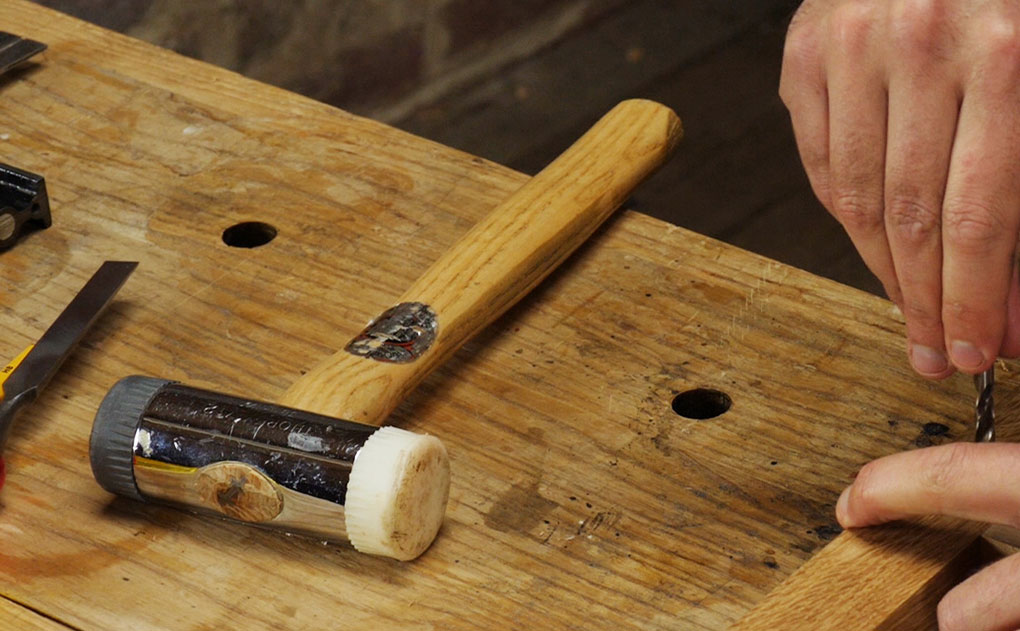
The Thor 712 (that’s the one I use), is a hammer. It’s not a mallet.
At least that’s what Thor recon – (on their website it’s classified as a hammer with nylon head.)
This is why I love it.
It is essentially a heavy metal head, which packs a punch, as well as giving me feedback. All the reasons I used ‘Lumpy’.
The head is finished with replaceable faces. Mine has a hard nylon one along with a softer grey face.
Like everything, I like to minimise my tools as far as possible, so I enjoy the idea of having the two face options.
That soft side’s great for knocking joints together without damaging the work, though whilst that’s nice it isn’t essential.
In practical use, I very rarely find myself using it.
The soft face lacks feedback, so even for those assembly tasks, I find myself hitting with the harder one.
It gives that ‘tap, tap, thud’. The sound deadens as the joint is seated.
Damage is rarely an issue anyway, since the harder the face, the more gentle you can be with the taps.
Using a lump hammer is elegant enough for me (the Thor just helps give me some dignity with it).
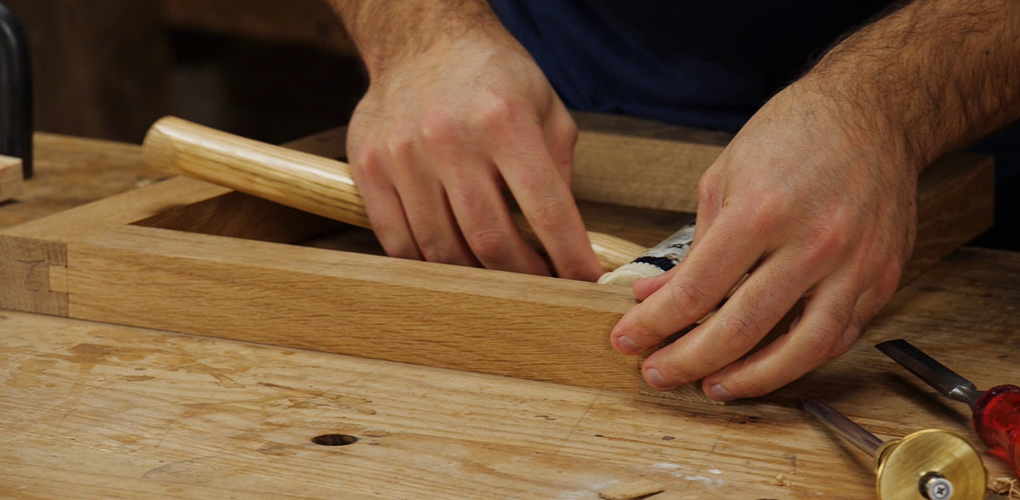
So What Are You Looking For When Choosing A Mallet?
When scrating around for the Thor online I noticed it’s not stocked by that many merchants, but a similar type of hammer was listed more often than not. By similar, I mean hammers with a heavy head, and replaceable plastic faces.
I can’t vouch for the quality of any of these, but whether it’s the Thor or not, I can offer a couple of pointers:
Size –
My mallet has a head of 38mm (1 1/4″) and weight of 650g (23 oz).
If it was available heavier then I’d go heavier.
Dense is good.
Faces –
Hard nylon faces are all that you need and give the best feedback in use.
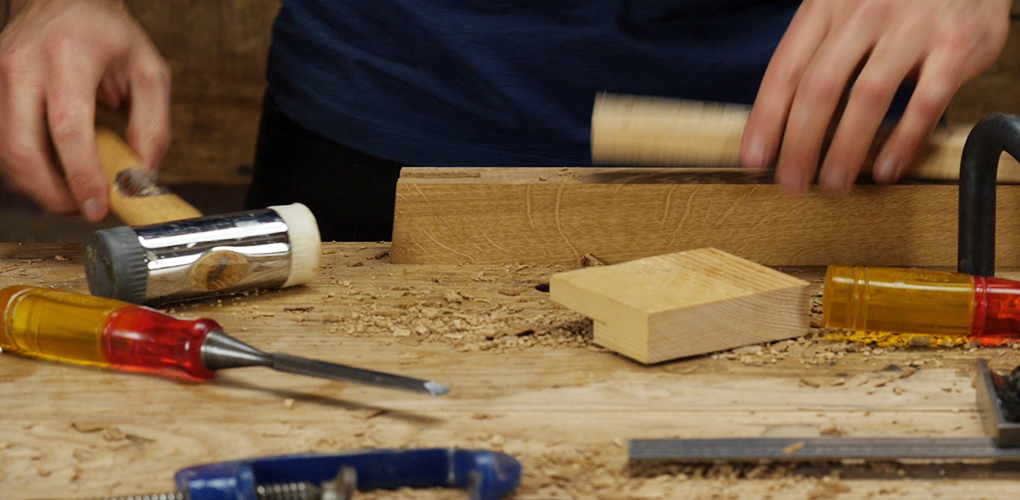
Some Uses For Your New Mallet
As well as being gentle enough to assemble your work, a nylon faced hammer is excellent as a general woodworking mallet.
It excels for morticing, and as dirty and gruff as this sounds, it combines wonderfully with a chisel that has a plastic handle, like my Marples. Those two together allow you to dig like a Jack Russell.
It’s not my choice for adjusting wooden planes. It can do it, but I prefer metal without question for tool adjustments, as the feedback is so tremendous.
Finally, don’t use it for hammering nails… even though I’ve done it.
If you’re setting up a tool kit and want to get it right first time, check out our full guide on the Complete (yet minimal) Hand Tools for Woodworking.
A Quick Update on the new Chair Build – we’ve been busy, and have gone through a full overview of the design process already. Today Chapter Three went live and we’re getting our design on to paper by learning how to create an isometric drawing. You’ll find the details here.

![Which Saws Are Best For Ripping Thick Stuff? [Video]](https://www.theenglishwoodworker.com/wp-content/uploads/2022/12/what-hand-saw-is-best-for-thick-rip-cuts.jpg)
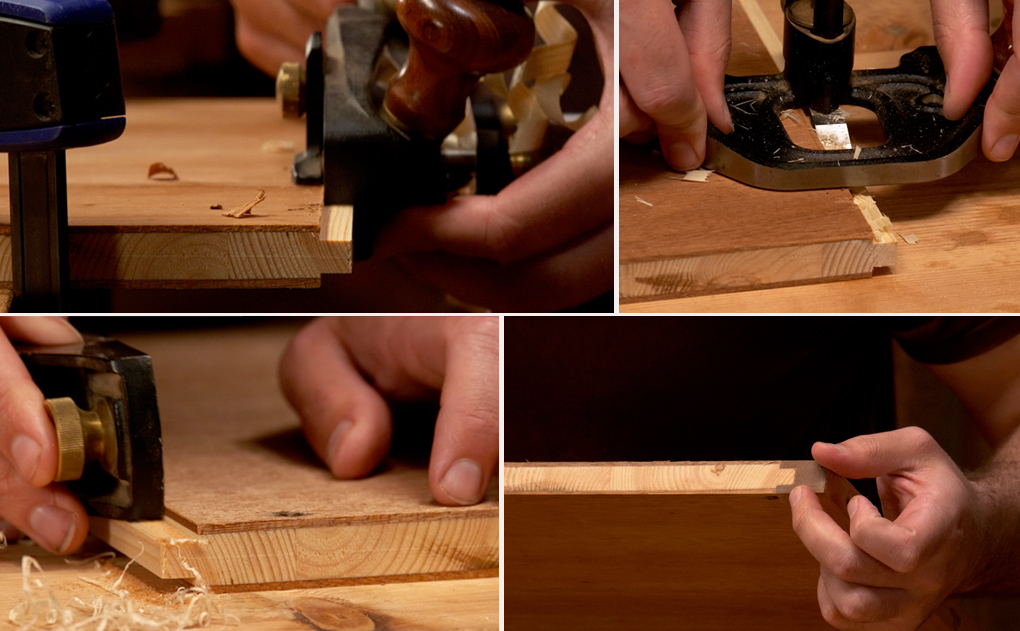
![Quick Homemade Clamps – Small & Large [with video]](https://www.theenglishwoodworker.com/wp-content/uploads/2022/08/how-to-make-your-own-woodworking-clamps.jpg)
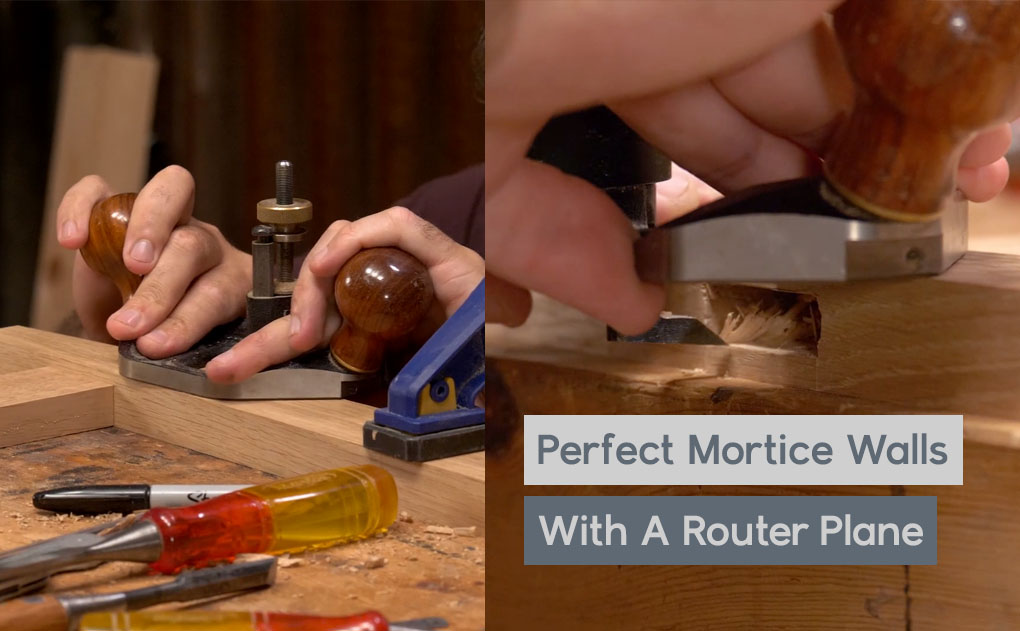
Yeah…I too have used my nylon mallet to hammer nails. Sometimes I just can’t find my normal hammer and my laziness takes over. As it often does.
I think you got the 712R if it’s 38mm, 710 is the 32mm head.
Cheers
Thanks David – we’ll update that…
My favorite mallet has always been the latest one that I’ve made. That said, I do have an Eastwing DFH12 that is somewhat similar to the Thor, but doesn’t have the replaceable faces. My mallets always have a scrap piece of leather on one face, kind of like the soft head of the hammer. I do like the Eastwing for smacking stuff in close quarters where a wood mallet is too large to maneuver, but other than that I like the feel of the wood mallet.
But that could just be my own bias toward a tool that I’ve made. In which case I may just need to use the Eastwing more often and get used to it.
The Thor I use is 55mm Dia and is a Copper/Hide, a new one has a pristine copper head, but once it has been used for a few years the copper spreads a little, but the Hide end is much better for feed back than the nylon insert, and I suppose could be seen as more traditional material.
I’ve had the same one for about 2 years now and really do like it.
Bonus is that “Thor” is probably the best name ever for a hammer manufacturer!
In the US, “The Hammer Source” carries – at least the majority of – the Thor line including the replaceable faces. I have ordered from them several times with good results. I originally had the plastic handle but found the grip to be very uncomfortable.
Thanks Don
I keep reaching for my wooden ones that I made even though I have a generic plastic faced mallet also. Big Ash head and cherry handle with traditional look. I guess I like the heft.
One of these days I am going to try making a round one. I should probably try a real Thor. Everyone who owns one seems to like them.
I have a little steel hammer that work great for my wooden planes. It was a antique/flea market find.
I bought the Thor on the Sir Paul recommendation, but eventually settled on the Stanley 57-594 soft faced hammer as the handle is thinner and the feel of it just seems a bit better to me… You can only buy it from US sellers for some reason though.
I bought the cheapy amtech clone a few years ago, mashed the faces and then realised that there were no stockists of replacements. I cobbled a shop made face using a hole saw without an auger in a drill press. Hair raising. Then I wrote to their customer services and they sent me two replacements for free anyway, good work Am-Tech.
Then the handle broke, but that was easier to replace. It’s turning into Trigs broom now.
Lol, sounds like a bank handed recommendation 🙂
Back handed or bank handed?! I’ve made no bank on the recommendation, worse luck. Its cheap, no avoiding that. But it has lasted longer than I expected it to at that price,
I use a dummy mallet I got from Tiranti years ago. It’s malleable iron with an ash handle, and weighs about a pound and a half. Meant for letter carving in stone, it’s heavy enough to give your chisel a good old belt, but balanced enough so you can do that gentle tap tap tap when you chisel out a dovetail (https://tiranti.co.uk/products/dummy-mallet-medium/)
I love my Thor 712R. What can you say about the name! I have had it about a year. I use it for everything from persuading to fine dovetail work. In the states at least, Amazon Prime two day delivery is available from a couple of sources.
So far, a cheap, ash mallet I made is giving me problems. dents stuff. gets ruined when hitting my holdfast.
So, maybe I’ll give one of these a try.
I like my wood mallet, like Steve it’s one I made. I used oak and it has served me well.
Duane
I’ve used a Thor for many years. It weighs in at 19 oz, which is good for most chiselling tasks. It inspired me to add UHMV faces to all my mallets. UHMV is difficult to glue, even with epoxy. The faces of the mallets below are nailed on (nails below the surface, of course).
Richard, what I like about the UHMV is that is offers good feedback being hard enough, but still protects an unhooped chisel back from damage. It is not a substitute for a gennou when wacking a Japanese hooped chisel.
Two I made and one is a modified Veritas Cabinetmakers mallet, which is now my go-to as the brass head takes it up to 20 oz.
https://s19.postimg.org/lksaqye1v/Hammers1_zpspmltek43.jpg
Regards from Perth
Derek
I am a little surprised anytime to hear people recommending a heavy mallet or hammer for hand work. I use a hardwood mallet and have never had problem with chopping or assembly work. Sharp chisels and finely cut joinery need no pounding, may I say. If you need pounding your way through, reassess your work/tools or joint.
A while back, I did try some of the hammers and mallets mentioned in some of these posts and more, and came to the conclusion that the one I have been with for more than two decades is still the best. From a photogenic point of view, Paul Sellers’ Tor hammer looks out of place with his other tools on his bench…just like his Dewalt(?) cordless drill.
I have recently bought a Thor hammer. Not really used it yet.
I used the Paul Sellers design to make some wooden mallets. I made an Oak one but it developed a split and a lump fell off – it is now rather unbalanced!
But I also made one out of some sapele. It weighs in at over 2 pounds but if it clumps something then that thing remains clumped. Where wooden mallets lose out is if you need to do some gentle persuading on timber that does not need to be marked. Then a soft faced hammer might come into it’s own.
It is however nice to have an alternative.
I prefer a heavier hammer for chisels because it’s easier on my wrist than lighter hammers or mallets. Using either my wooden mallet or my Thor 712 for too long aggravates old injuries, but the slow thuds I deliver with my 2.5 pound “drilling” hammer don’t bother me at all.
I prefer the Thor hammer for other tasks, including striking holdfasts. Hitting a holdfast with a metal hammer is too loud in my basement shop.
There is a similar and much heavier 13-716N 1230g 50mm (12-720N 2200g),
More likely the 12-714N 760g 44mm
I’m on my way to get Thor right now. Convinced. I’ve acquired all sorts over the years including a very hard rubber tenting mallet which is excellent for any wood bashing. Time to bin a few I think.
From Canada I use Lixie Hammers. They are cost prohibitive to some but I find they do a great job in my shop.
They come in six sizes and twelve weights with four different heads for various tasks.
I ordered a Thor 712R but it arrived with it’s head loose so I sent it back. I was intrigued by lumpy and have been trying a 2lb Eastwing drilling hammer. I like it. I wanted a heavier hammer around the shop anyway.
#TeamLumpy
Here’s a not so obvious consideration – noise. Important for those ninja-by-necessity woodworkers 😉
https://youtu.be/Hmp0x7LBCo0
It’s my primitive black locust mallet (with around 100 g of metal inside) against a metal hammer. Since then I opted to make my own Japanese-style metal chisel hammers… from mild steel billets. I opted for a circa 370 g head for most of my chisels and a circa 500 g head for my 30-40 mm chisels.
Foromir made me realize that I’ve also made a wood mallet with lead weights shoved inside it. I use it for carving and detail chisel work and love it.
Have you seen or tried these…
http://www.woodisgoodco.com/mallets.htm
The round head takes a bit of getting used to, mostly used for carving. But I wouldn’t use a wooden mallet again.
These have a urathane head which feels soft and a wee bit spongy at first, through time I love how all the force is transferred into either the wood or the tool.
I bought a 20oz and a 30oz. I love the 30 for morticing, gentle when needed and controlled force when needed.
Best I’ve ever used.
Thor Size 2 Hide Hammer; weight 800g, face diameter 1.1/2 inch, wooden handle.
Just ordered this for £22.65 on eBay after reading this blog. I use it as a general purpose mallet. Has anyone tried one?
Pete
Hmm
I’ve a LOT of 16mm mortises to cut, so I think I’ll go large & buy a 12-714N
Face is 44mm & weight 760g/27oz.